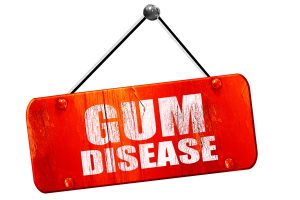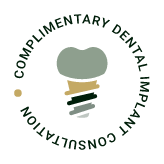 Millions of people have gum disease. In fact, it afflicts roughly half of the adults in the United States. Sadly, though, many do not realize that their gums aren’t as healthy as they should be, or perhaps they do not know how dangerous gum problems can be. Let’s talk about the stages of gum disease in Spring Lake and how you can protect your smile from this serious condition.
Millions of people have gum disease. In fact, it afflicts roughly half of the adults in the United States. Sadly, though, many do not realize that their gums aren’t as healthy as they should be, or perhaps they do not know how dangerous gum problems can be. Let’s talk about the stages of gum disease in Spring Lake and how you can protect your smile from this serious condition.
Gingivitis: The Beginning of Gum Disease
When plaque builds up along the gum line, it can irritate the gums and lead to inflammation. This is the first stage of gum disease and is known as gingivitis. At this point, symptoms are relatively mild and may include swollen, sore gums that bleed during brushing and flossing. The bone tissue beneath the gums is still intact, and no permanent damage has occurred.
If you have gingivitis, you may be able to reverse your condition by making adjustments to your oral hygiene routine. Thorough brushing and flossing can fight the plaque and allow your gums to heal. Your dentist in Spring Lake can recommend products and cleaning techniques that will get your oral health back on track.
Periodontitis: When the Damage Becomes Irreversible
If gum disease progresses, it can eat away at the bones and tissues that support the teeth. Symptoms include persistent bad breath, gum recession, and sensitive teeth. A pocket may form below the gum line, which traps food and bacteria.
Treatment for periodontitis may involve a procedure known as scaling and root planing, which essentially amounts to a deep cleaning of the mouth that clears away plaque both above the below the gum line. During this procedure, the dentist also smooths out the roots of the teeth so it is more difficult for bacteria to cling to them.
Advanced Periodontitis: The Final Stage of Gum Disease
During advanced periodontitis, the damage to the bone and other tissues around the teeth becomes so severe that the teeth may begin to shift out of place. They might even fall out altogether. Surgery may be necessary to reduce the depths of the bacteria-filled pockets in the gum tissue and reattach the gums to the teeth. After a patient’s gum disease is well-managed, they can talk to their dentist about replacing the teeth that their condition caused them to lose.
Preventing Gum Disease
Although some people are genetically predisposed to gum disease, there are still steps you can take to protect your smile. You can drastically reduce your chances of developing this condition if you are diligent about brushing and flossing your teeth, and if you receive regular professional dental cleanings. Avoiding habits like tobacco use and excessive sugar consumption can also help to protect your smile.
Gum disease is a serious problem! If you suspect there is even a small chance that your gums aren’t as healthy as they should be, visit your dentist as soon as possible.
About the Author
Dr. Edward Dooley is a Spring Lake native who has been serving our community for decades. He is well-qualified to help patients prevent and treat gum disease. If it is time for your next checkup, or if you have questions about your gum health, contact our office at 732-974-2288.

